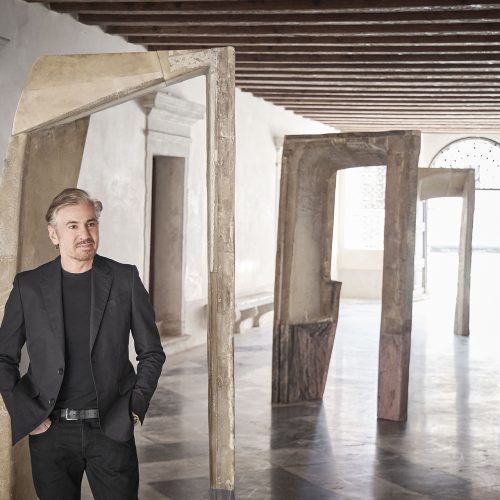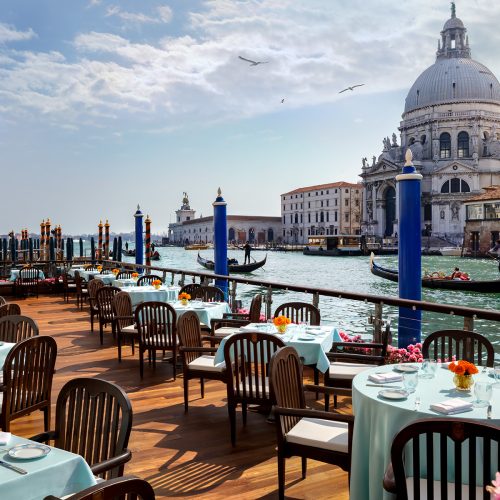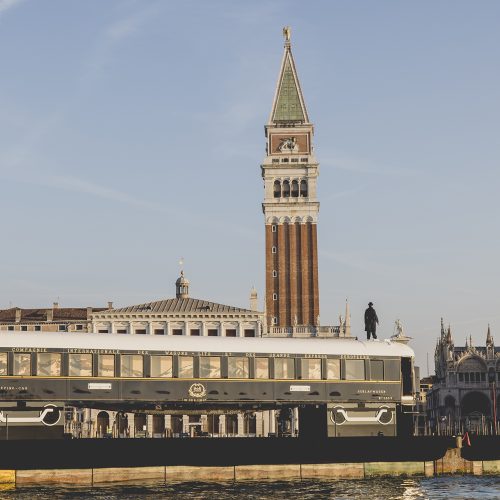

5 Powerful Works from Kehinde Wiley’s Groundbreaking Career
On the occasion of a major new show at the de Young museum in San Francisco, we look back on the celebrated artist’s key works

Kehinde Wiley, Napoleon Leading the Army Over the Alps, 2005. Photo: Courtesy of the Brooklyn Museum
1. Napoleon Leading the Army over the Alps, 2005
This iconic painting represents Kehinde Wiley’s long-standing interest in European art history and the grand tradition of portrait painting. Here, the artist takes Jacques-Louis David’s famous early 19th-century equestrian portrait of Napoléon Bonaparte and replaces the figure with a Black man wearing a bandanna and Timberland boots. The work was part of Wiley’s “Rumors of War” series, which responds to the U.S. involvement in the Iraq War. “Kehinde Wiley is one of the rare artists who has developed a unique visual language that resonates both within the art world and beyond,” says Claudia Schmuckli, Curator-in-Charge of Contemporary Art and Programming at the de Young museum in San Francisco. ‘He has dedicated his artistic career to uplifting the beauty and power of Black people by projecting his subjects into positions of authority and grace.”
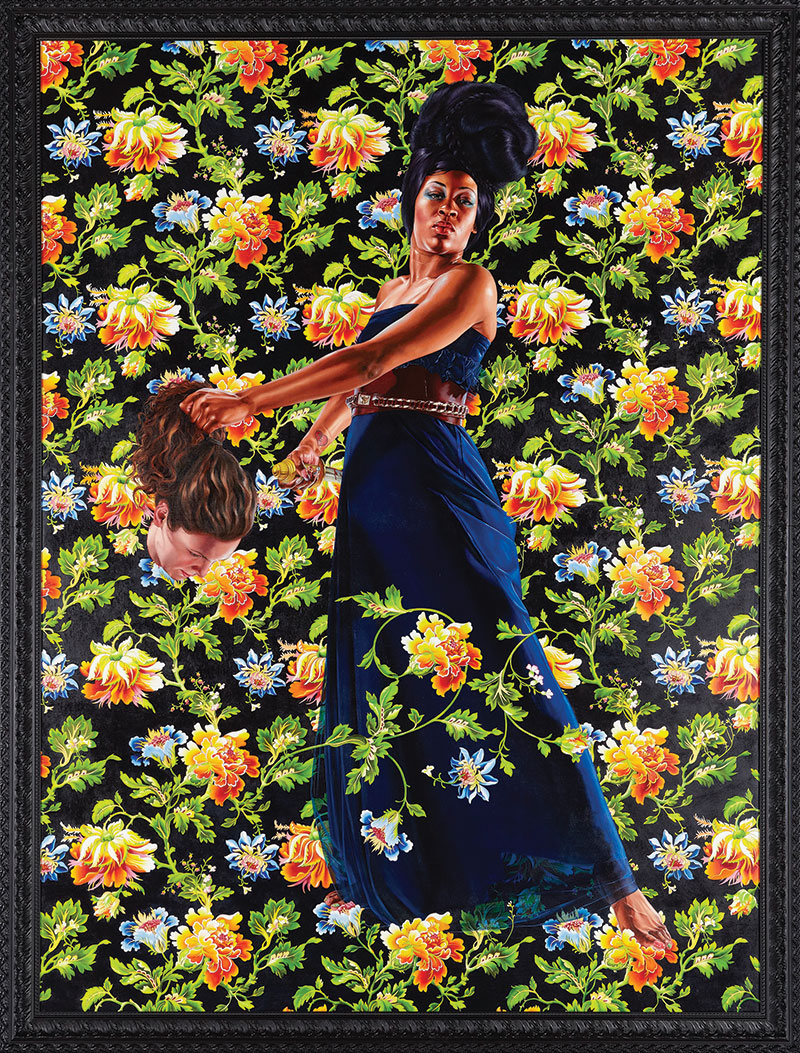
Kehinde Wiley, Judith and Holofernes, 2012 Photo: Courtesy of the North Carolina Museum of Art and Sean Kelly New York
2. Judith and Holofernes, 2012
In 2012, Wiley, who is most known for his large-scale, photo-based portraits of young Black men, created “An Economy of Grace,” a series featuring women like this powerful Black figure wearing a flowing gown (custom designed for the model by Riccardo Tisci, then at Givenchy) staring coolly out at the viewer. Presented against one of the artist’s signature wallpaper-like backgrounds, she holds a knife in one hand while the other clutches a severed head, a dramatic twist on Giovanni Baglione’s depiction of the biblical episode.

"A New Republic", 2015 Photo: Courtesy of the Brooklyn Museum
3. “A New Republic,” 2015
Wiley’s acclaimed survey at the Brooklyn Museum featured six full-length portraits rendered in stained glass. Inspired by the windows designed by French neoclassical painter Jean-Auguste-Dominique Ingres, and produced by artisan manufactures in the Czech Republic, they glorify contemporary subjects in grandiose settings traditionally used for religious contemplation.
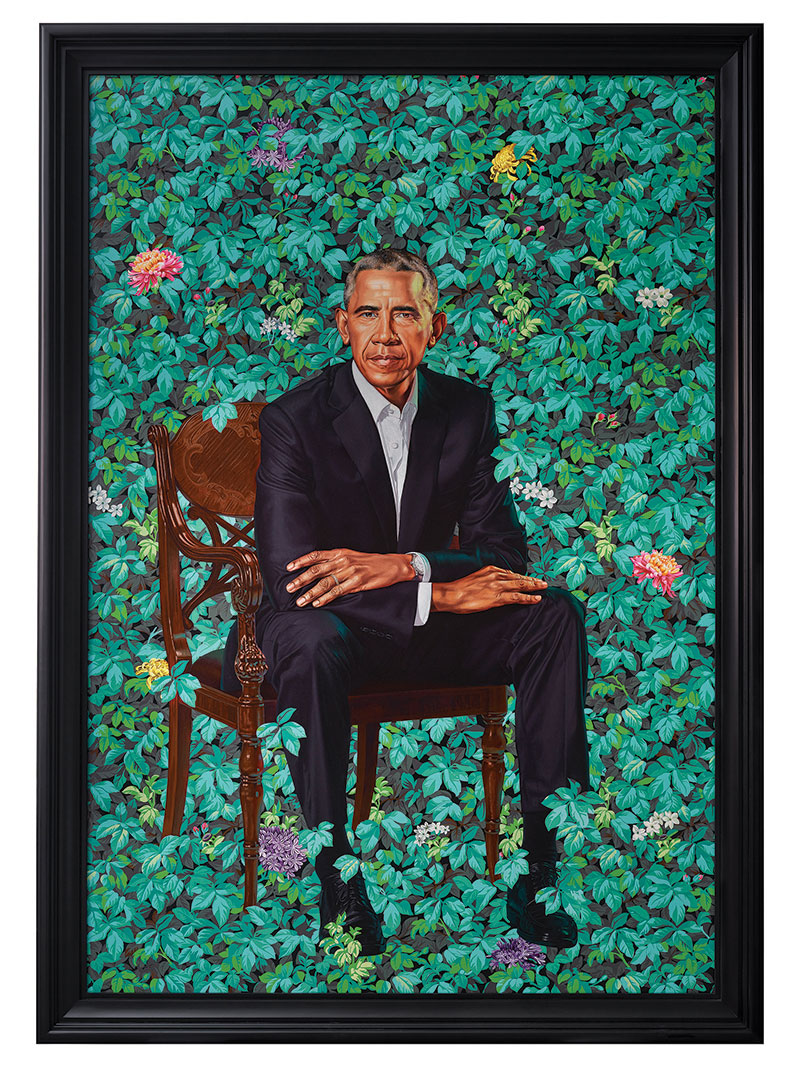
Kehinde Wiley, Barack Obama, 2018 Photo: Courtesy of the National Portrait Gallery, Smithsonian Institution
4. Barack Obama, 2018
A distinct departure from the staid presidential portraits of the past, Wiley’s commission of the 44th U.S. president propelled the artist to new heights. Portraying Barack Obama surrounded by lush foliage, the work is filled with personal symbolism: The chrysanthemum is the flower of Chicago, white jasmine references Obama’s native Hawaii, and African
blue lilies represent Kenya, his father’s birthplace. “Wiley’s portrait of former President Barack Obama has catapulted him into a sphere of recognition only few artists are able to achieve during their lifetime,” says Claudia Schmuckli.

Kehinde Wiley, Femme Piquée Par Un Serpent (Mamadou Gueye), 2022. Photo: Ugo Carmeni; COURTESY OF THE ARTIST AND TEMPLON, PARIS – BRUSSELS – NEW YORK. © KEHINDE WILEY
It’s the desire to be seen, the desire to be alive—that is what the work is about.”
Kehinde Wiley
5. Femme Piquée par un Serpent (Mamadou Gueye), 2022
The searing exhibition “An Archaeology of Silence,” on view at the de Young museum through October 15, comprises more than two dozen new paintings and sculptures that challenge the silence around systemic violence against Black people using the visual lexicon of the fallen figure. “The Black men and women featured in An Archaeology of Silence are united by a shared sense of vulnerability that is grounded in an emphasis on their personhood,” says Schmuckli, who curated the show. “Their depiction as fallen heroes, lovers, martyrs, or saints inscribes them into an iconography of the devotional that makes viewers look at them with respect and reverence.” The exhibition features a body of work that has been in formation for many years and has a precursor in WiIey’s 2008 series “DOWN.”
“Each one of these losses is handled and dealt with by families and by loved ones who hopefully will carry the individual significance of those people on. But the job of my work is to be able to speak that loudly to the population, to be able not to just create a political statement, but to create a much more personal, poetic, spiritual one that talks about the ties between those great historical, monumental European works and some of those great historical, monumental young black and brown kids who surround us every day,” says Wiley. “It’s the desire to be seen, the desire to be alive—that is what the work is about.”
A version of this article first appeared in print in our 2023 Summer Issue under the headline “Milestone: Kehinde Wiley.” Subscribe to the magazine.

